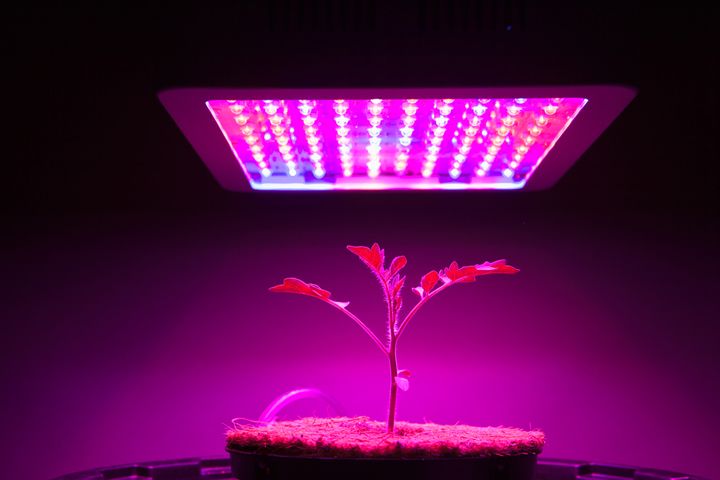With an ever-expanding market and a surge in innovative horticultural LED lighting fixtures, it's crucial for consumers to tread carefully. In 2021, an age-old phrase remains incredibly pertinent: "Lies, damn lies, and statistics."
 Decoding LED Grow Lights: Beyond the Numbers
Decoding LED Grow Lights: Beyond the Numbers

Article from | Iluminar Lighting
In the dynamic world of horticultural lighting, the hunt for the perfect LED grow light can be both exciting and daunting. With an ever-expanding market and a surge in innovative horticultural LED lighting fixtures, it's crucial for consumers to tread carefully. In 2021, an age-old phrase remains incredibly pertinent: "Lies, damn lies, and statistics." Here, we'll navigate through the maze of LED grow light choices and shed light on the numbers that truly matter.
The Beacon: Photosynthetic Photon Efficacy
As you delve into the universe of LED grow lights, you'll encounter a pivotal number - PPE, or Photosynthetic Photon Efficacy. For newcomers, this acronym may initially appear as a mark of scientific authority. Photosynthetic Photon Efficacy has been the gold standard in measuring "light efficiency" within the horticultural industry for years. However, the scene is evolving.
Deciphering the Code: The Microscopic World of µmols and Joules
A closer look at Photon Efficiency reveals that it's measured in µmols per Joule (J). Now, for many, the inclusion of Greek symbols and the mention of "Joules" might transport them back to less pleasant science class memories. The mere thought of "science talk" can trigger flashbacks of Charlie Brown's teacher - "Wah-wah-wah micromoles wah-wah-wah, photon efficacy…" But for those earnestly seeking the best LED grow light, merely comparing Photon Efficiency numbers won't suffice.
Peeling Back the Layers: What is Photon Efficiency?
Photon Efficiency is the total light emitted by a fixture (known as PPF - Photosynthetic Photon Flux) measured in µmols per second, divided by the number of watts needed to produce that light. For example, if an LED fixture generates 2,300 µmols per second using 1000W of electrical power, its Photon Efficiency stands at 2.3 µmols/J. (A Joule equals one watt of power per second.)
It's widely recognized that LED grow lights are generally more efficient than older technologies like High Pressure Sodium, Metal Halide, Ceramic Metal Halide, and T5 Fluorescents. So, it's understandable that comparing Photon Efficiency numbers - even among fixtures with different wattages - seems logical to assess the market.
One LED fixture boasts 2.3 µmols/J. The next month, a competitor announces their new model with 2.5 µmols/J. A few weeks later, claimed Photon Efficiencies reach 2.7, 2.8, 2.9... The pattern suggests that technology is continually advancing, with higher numbers implying greater efficiency in transforming electrical power (Joules) into plant-usable light (µmols).
Understanding Photons: Not All Created Equal
Amidst the race for higher Photon Efficiency numbers, it's crucial to recognize that these "µmols" represent a "blind count" of photons. Full-spectrum light encompasses the complete range of colors, from high-energy blue photons to medium-energy green photons and low-energy red photons. All photons are treated equally concerning Photosynthetic Photon Flux, Photon Efficiency, and their associated µmols.
The Role of Light Spectrum in Intensity
Commercial indoor farmers understand that it's not merely about the quantity of photons but their quality. Plants have evolved under continuous full-spectrum sunlight, familiar with enjoying all colors all the time. Furthermore, the ratios of blue to red light and red to far-red light are pivotal for healthy plant growth. Full-spectrum, phosphor-coated diodes are a staple in LED grow lights designed for grow rooms and indoor farms, ensuring the right blend of colors that plants need.
The Emerson Effect and Beyond
Scientific pioneers like Robert Emerson and more recent research have revealed the complexity of plant photosynthesis. Plants don't just seek photons; they have distinct preferences for specific wavelengths and combinations.
Meet the Next-Gen: It's All About BPF, BPFD, and BPE
With the emergence of new metrics - ePAR, BPF, BPFD, and BPE (the "B" signifies "biologically active") - the world of horticultural lighting is evolving. These metrics redefine the parameters for measuring plant-usable light, lighting intensity, and fixture efficacy. As this shift occurs, it's essential to ensure your LED grow light choice aligns with these evolving metrics.
Beyond Efficiency: Other Factors Matter
When choosing an LED grow light, other critical factors warrant consideration. These include recommended canopy distance, dimmability, controller compatibility, diode longevity, diode variety and layout, water resistance, form factor, driver quality, and heat sink efficiency. If you encounter an LED grow light manufacturer that heavily emphasizes Photon Efficiency and little else, it's a sign to inquire further or explore alternatives. Informed choices encompass a broader spectrum of factors to ensure your plants receive the best care and growth environment.
Conclusion
The world of LED grow lights is evolving, and understanding the nuanced metrics that matter is vital. As new measures like ePAR, BPF, BPFD, and BPE replace the old, it's imperative to align your horticultural lighting choice with these evolving standards. For additional inquiries or insights into these emerging developments, feel free to contact us at marketing@iluminarlighting.com. We're passionate about exploring these new frontiers in horticultural lighting.
The content & opinions in this article are the author’s and do not necessarily represent the views of AgriTechTomorrow
Comments (0)
This post does not have any comments. Be the first to leave a comment below.
Featured Product

